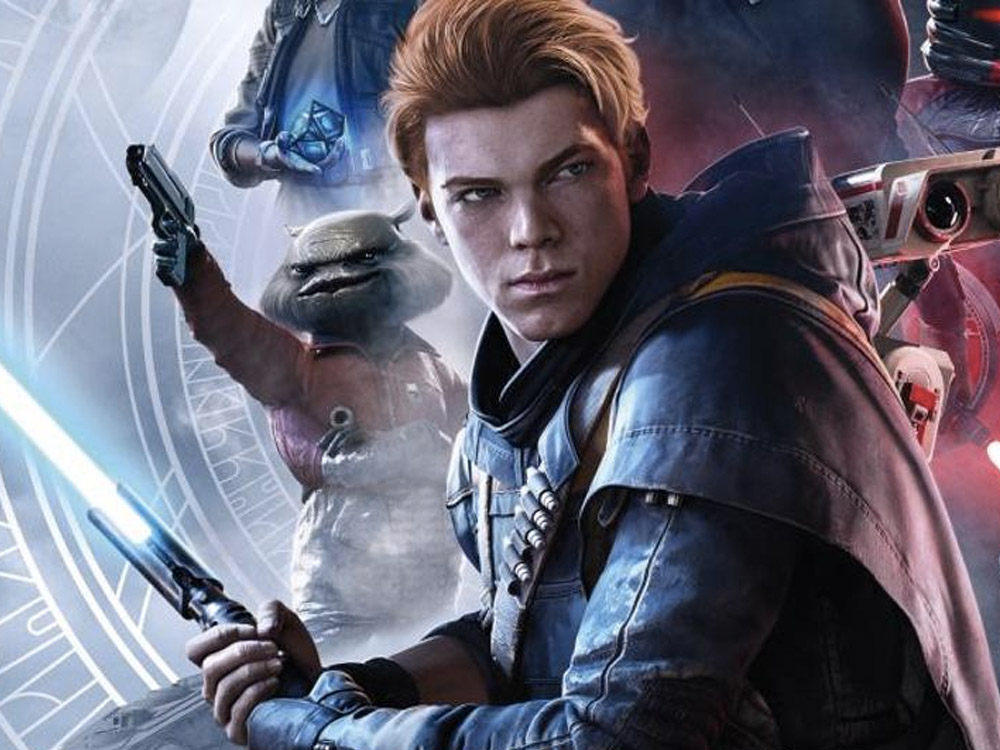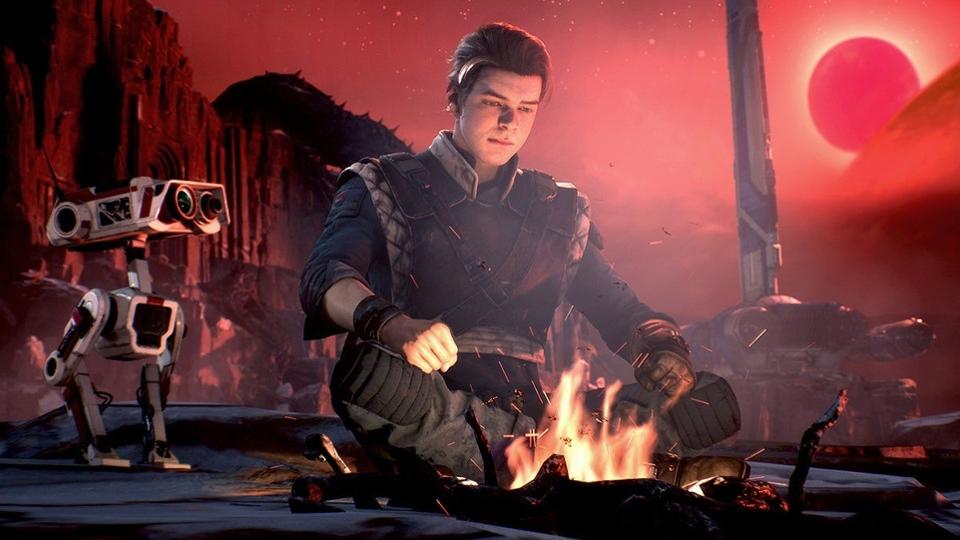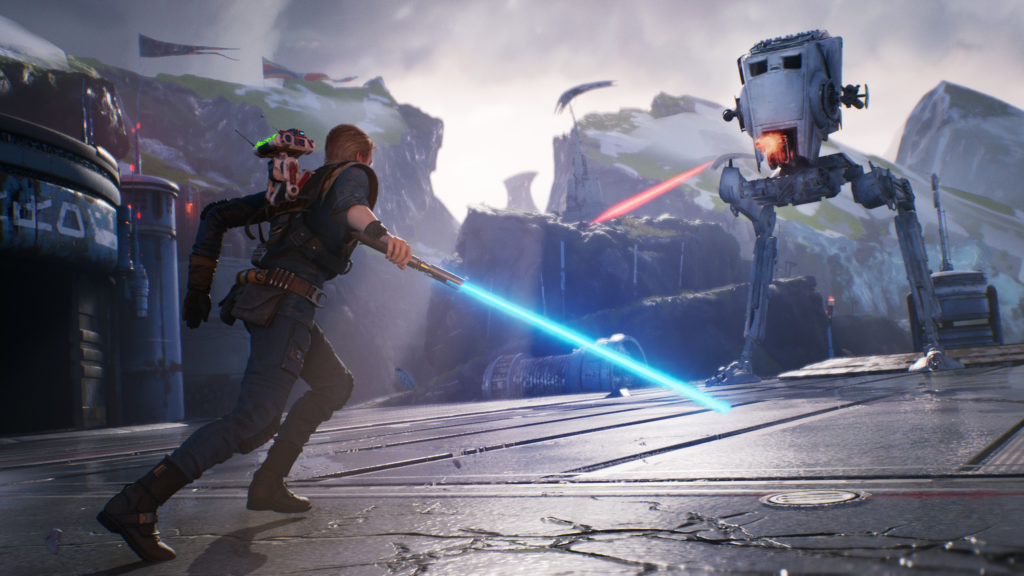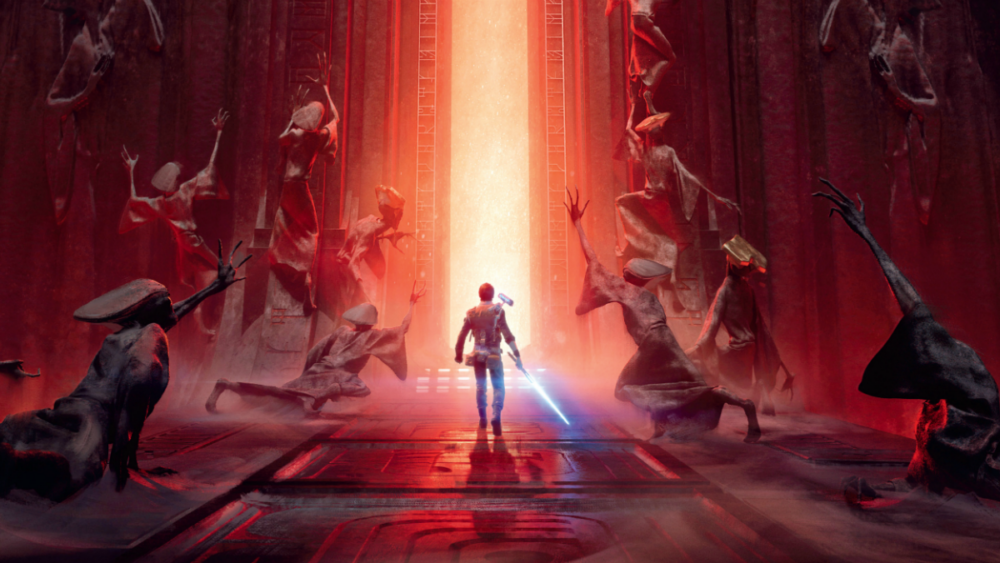Throughout the storied history of the Star Wars franchise, the Jedi have always been painted as something mystical, something more than simply human. Their powers made them superheroes, their beatific approach to the concept of peace in the universe made them sages. Because of that, there was something refreshingly, joyously mortal to watching my Jedi avatar Cal Kestis die for the 400th time because of a misplaced jump or mistimed dodge. “Wow,” I whispered to myself, a tear rolling down my cheek as I wiped the shards of glass from the television off of my bleeding fist, “finally a Jedi I can relate to.”
Star Wars Jedi: Fallen Order is, by my very official tally, the hundred-millionth Star Wars game to be released into the world. It has been a somewhat fallow period for Star Wars games recently — the two misbegotten Battlefronts severely damaged any goodwill Electronic Arts (EA) had as a caretaker of the storied franchise. But Fallen Order, developed by the very reputable Respawn Entertainment (Titanfall, Apex Legends) and directed by the equally reputable Stig Asmussen (God of War 3), goes a long way toward restoring this trust. A large-scale, action-adventure that immerses you deeply into a story befitting of the Star Wars umbrella, Star Wars Jedi: Fallen Order immediately slots into the upper echelon of the Star Wars media Universe.
Fallen Order takes place somewhere between the third and fourth Star Wars movies — after the Sith have wiped the Jedi order out and evil-mass-of-talking-wrinkles Emperor Palpatine has taken control of the Galaxy, ruling with an iron fist alongside his whiny-moody, half-robot son Darth Vader. You’re slipped neatly into the role of Cal Kestis, who we first meet working on the fuselage of a scrapped ship on a planet called Bracca. When an accident sends your friend plummeting to his death, the game prompts you to use the force to stop his fall — and now we know that Kestis is no ordinary shipworker: Dude’s a freakin’ Jedi. Unfortunately, we’re not the only ones who know: An imperial probe droid witnessed the whole affair and, like the galaxy’s rudest robotic paparazzo, sent the photos to the empire. And so the journey begins, taking you across the galaxy on a mission to recover a trove of information that could lead to other Jedi in hiding while taking down the forces the Empire has sent to stop you short.
The biggest compliment I can give to Fallen Order’s story is that it feels like a Star Wars story; the characters banter and snipe, the fights crackle and hum, and the story takes you through planets and locales suitably vast and alien. Your cast of sidekicks — always the most important part of any successful Star Wars franchise — is more than up to the task. If I’m being honest, I find the quasi-motion-capture-y facial animation that accompanies a lot of story-heavy games of this generation to be more off-putting than engrossing. I’m never more aware of how much actors do with their eyes — and how hard eyes are to realistically fake. But it’s the dialogue of Jedi rogue Cere Junda and grizzled pilot Greez Dritus, your saviors and constant companions throughout the story, that make them feel lively and real. Plus, the requisite cute anthropomorphized robot role is filled by BD-1, a tiny doglike droid that spends most of the adventure perched on your shoulder beeping, tossing you health packs, and hacking into empire comm systems. I would die a million deaths for BD-1. Forget the Jedi Order: BD is the reason that I persevere. But I digress.
The actual gameplay consists mostly of a combination of terrain navigation, puzzle-solving, and good ol’ fashioned saber slashing. As I played through, I was honestly surprised by the amount of emphasis put on the physical exploration aspect of the game — it felt at times like a freaky, intergalactic cousin of the Uncharted series. And like Uncharted, there’s a certain kinetic rhythm to the game that becomes more fluid and complex as you become more experienced — particularly as you unlock more uses for your Force powers throughout the game. I hate to use the whole “really makes you feel like X” video game reviewer trope, but something about leaping into the sky on an air vent, running along the side of the wall, only to dive into the void but at the last moment use the force to pull a vine toward you and swing to safety really does send a thrill through the whole experience.
The combat, on the other hand, draws less from Uncharted and more from Sekiro: Shadows Die Twice: Every enemy has a guard bar that can be broken by well-timed blocks or chaining together attacks. The main difference being that, unlike Sekiro, there is no stealth in Fallen Order. All that means is that instead of spending 45 minutes trying to inch your way around a cadre of angry samurai only to get immediately exposed by a pissed-off chicken and murdered (love you, Sekiro), every battle is going to be fought, which means you have to be smart about how you engage. You can dive in headfirst, rapidly deflecting laser blasts while slicing and dicing your way through Stormtroopers; you can use the force to toss someone off a precarious ledge or freeze an opponent in place. To be honest, it was never the groups of Stormtroopers that I was worried about — they pretty much live up to their series reputation of being generally hopeless. It was the creatures. The CREATURES! Remember everything I just said about battle strategy? Throw it all out the window. When a giant space ram turns red and starts to rush you on the side of a cliff? When four little space rats jump out of their dens and group-maul you? When a giant spider appears from underneath your feet while you’re innocently exploring a room? All strategy is gone. Adapt or die. The variety of enemies and wealth of methods for dealing with them helps further flesh out the expansive feeling of the world in which you’re playing.
The game — much like Star Wars itself — is not without its various faults and flaws. The game has a tendency to be pretty consistently glitchy. I experienced a lot of frame skips and loading issues throughout the game —nothing experience ruining, but enough to be distracting. The glitches extended to the gameplay at times as well. In one particularly memorable instance, I loaded into what was supposed to be an epic Wookie versus Empire battle, only for all of my Wookies to simply stand still, guns at their sides, and watch placidly as a cadre of Stormtroopers proceeded to kill them all, leaving an understandably irritated Cal to fight a small army on his own. Life isn’t supposed to be easy for an enemy of the empire, I suppose.
In addition, the game has a somewhat extensive Easter egg and achievement system that feels more like an unnecessary way to conform to the completionist-catering mindset of a lot of modern games than a legitimate expansion of the game’s worth. There is a novel lightsaber modification system — nothing can quite shake the childlike wonder immediately manifested by getting to choose your lightsaber’s color — but the outfit choices, ship skins, and scattered Easter eggs feel more like filler than features.
Star Wars Jedi: Fallen Order is a game with a high bar to cross. The Star Wars franchise has always come with its fair share of critical eyeballs, the associated games perhaps even moreso. The creators of the game succeed by inverting the formula: Instead of making a Star Wars product that happens to be a game, they’ve made a well-thought-out, well-crafted game that happens to be a Star Wars adventure. This approach allows the game to feel both vast and specific, both true to its source material and an exciting realization of the best parts of the current climate of video games.
Here’s hoping that it serves as a message of encouragement to EA, a company famous for its ability to listen well and respond to the desires of the consumer: Simply slapping the Star Wars logo on a poorly constructed game does not make for a cult classic. Taking the time to craft a story that earns its place in the galaxy far, far away is a much tougher challenge — and a much more notable one when, like here, it’s met.
Photos: EA




